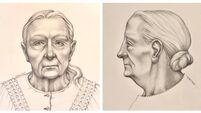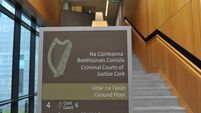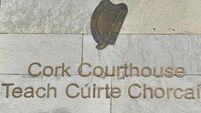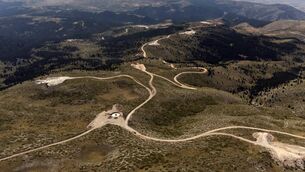Will we ever solve the mystery of Ireland's unidentified human remains?
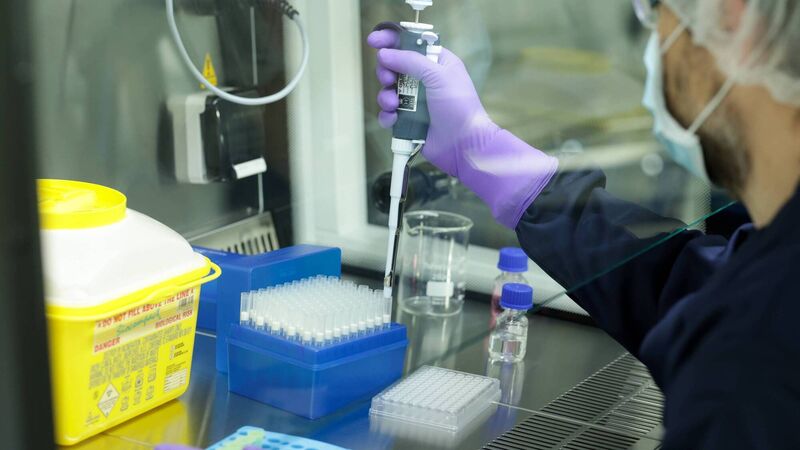
The database currently also contains the DNA of 43 unidentified people, whose remains are either buried or in storage awaiting a match. Picture: Maxwells Dublin
More than 360 families of missing people have submitted their DNA in a bid to find their loved ones since establishment of a samples database almost a decade ago.
The database currently also contains the DNA of 43 unidentified people, whose remains are either buried or in storage awaiting a match.
However, sources familiar with the process of attempting to re-unite unidentified remains with their families say that Ireland’s DNA database is very limited.
One source said that that it is likely to become more and more difficult to solve the mysteries of unidentified remains because of the changing nature of Ireland’s population and the influx of migrants.
“It will get harder and harder and harder to find a match, because the DNA database we have is very limited. We don’t have a population-wide database,” according to the source.
A number of unidentified remains have been exhumed in recent months for the purpose of DNA sampling.
The recent case of a man exhumed in November from a grave in Bandon, Cork, failed to produce a match, and the DNA profile for him has been forwarded to Interpol.
A spokesman for the Department of Justice said that there is a central repository for DNA profiles taken from unidentified human remains (UHR) and from the relatives of missing persons.
He said: “Forensic Science Ireland (FSI) now has over 366 families on this database together with profiles from 43 UHR.
"FSI and An Garda Síochána have worked in partnership over the past number of years to deliver a DNA testing facility for families of missing persons at the National Missing Persons Day in-person ceremonies.
"This includes relatives of missing persons having the opportunity to give a DNA sample for inclusion on the national DNA database.”
The database was set up under the Criminal Justice (Forensic Evidence and DNA Database System) Act 2014 in November 2015.
The database is maintained by Forensic Science Ireland.
The spokesman said: “The DNA database system has two key functions: To match the DNA profile from an individual to an unidentified crime scene profile and/or match the crime scene profiles across different crime scenes; and to assist with identifying missing and unknown persons.”
He added: “The missing and unknown persons section of the database hold the DNA profiles developed from biological samples relating to missing persons, such as from their belongings such as a razor or a toothbrush.
"It also holds profiles from their close blood relatives, who will have similar DNA.
"Profiles of persons who are unable to identify themselves due to illness or injury can also be entered on the DNA database, as can profiles from bodies of unidentified deceased persons.”
He said that while there are challenged in how DNA can be recovered from decomposed remains, recent developments in FSI “include the introduction of improved bone extraction methods, advanced DNA testing chemistries and familial testing software”.
He said the database enables links to be made to close relatives including parents, children, and siblings.
In order for DNA profiles of families to be forwarded to Interpol for inclusion in the International I-Familia Database DNA profiles from more than two relatives of a missing person are required.
He added: “Currently there are profiles from 72 families in this international database.”
Claire Clarke’s sister Priscilla disappeared after going horse-riding with her employer Lynda Kavanagh in Wicklow in 1988.
Ms Kavanagh’s body was recovered from the River Dargle two days later but Priscilla has never been found.
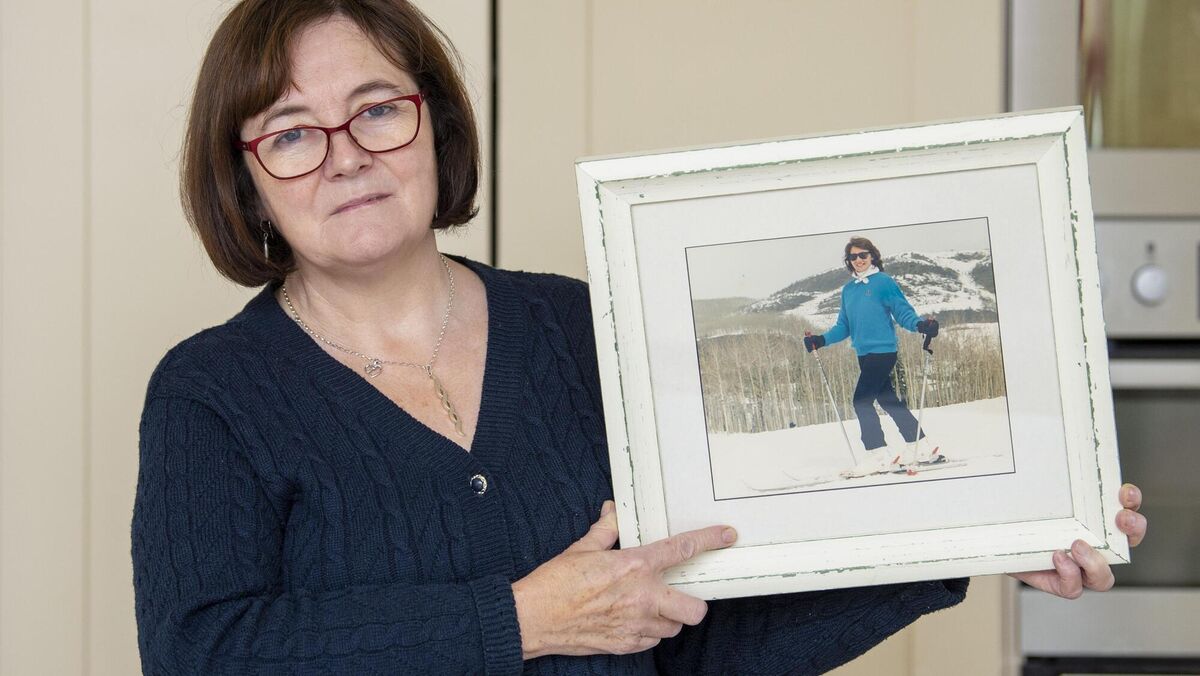
She is one of more than 800 people who remain "missing" in Ireland.
Claire has given a DNA sample in the hope of one day finding her sister and recently met with Garda Commissioner Drew Harris with a group of other relatives of missing people to lobby for improvements to services for families of Ireland’s missing people.
She says that families are often not aware of the process and protocol around DNA profiling, particularly in relation to the sharing of profiles internationally.
She and other families are now hoping to have a tour of FSI’s facilities to get more information around the database.
In a grave in Crosstown cemetery in Wexford lies the remains of a person known only as 'Ballinamona Woman.'
She is almost a postscript at the bottom of the tombstone marking the grave, in which also lie the remains of Bristol native Mark Dean Heardon who drowned off Hook Head on March 5, 1995, while sailing on his own from Waterford to Dublin.
They are buried in a so-called pauper’s grave in St Ibar’s cemetery, along with another man, Thomas Stafford, who died in 1951.
While both men are named on the gravestone, there is just one line referencing the remains of “an unidentified female whose remains were washed ashore at Kilmuckridge 12th December 1995”.
Her case is one of 48 included on Ireland’s database of unidentified human remains unveiled in May 2023 and revamped twice since then.
Recently, photos of clothing worn by the woman when she was found have been added to her listing on the database.
These included a pair of Lee Cooper jeans, while a key found in one of her pockets is believed to have belonged to a Volkswagen car.
No car has been identified as being linked to the woman. She was wearing a pair of lace-up black size 39 shoes.
Attempts to identify her through DNA sampling have so far been unsuccessful.
An autopsy was conducted on the remains in January 1996 and found that remains belonged to a woman of 176cms in height.
The cause of death could not be established.
A second examination in November 2007 helped establish that the remains belonged to a woman aged been 25 and 40 years old.
She also had braces on her bottom teeth.
The fourth anniversary of the discovery of skeletal remains along the old Midleton railway line in Cork was January 5 but attempts to identify them have so far failed.
The remains, believed to be those of an elderly woman, were discovered near the Shanty Gate on the old railway line at Westpark, some 3km from Midleton, on the afternoon of January 5, 2021.
The discovery was made by workers developing a greenway along the old railway line.
DNA testing was carried out on the remains after the discovery.
However, while a small number of people came forward and had DNA taken from them for testing, no link between them and the remains was found.
An autopsy, as well as a forensic anthropology examination, was conducted on the remains.
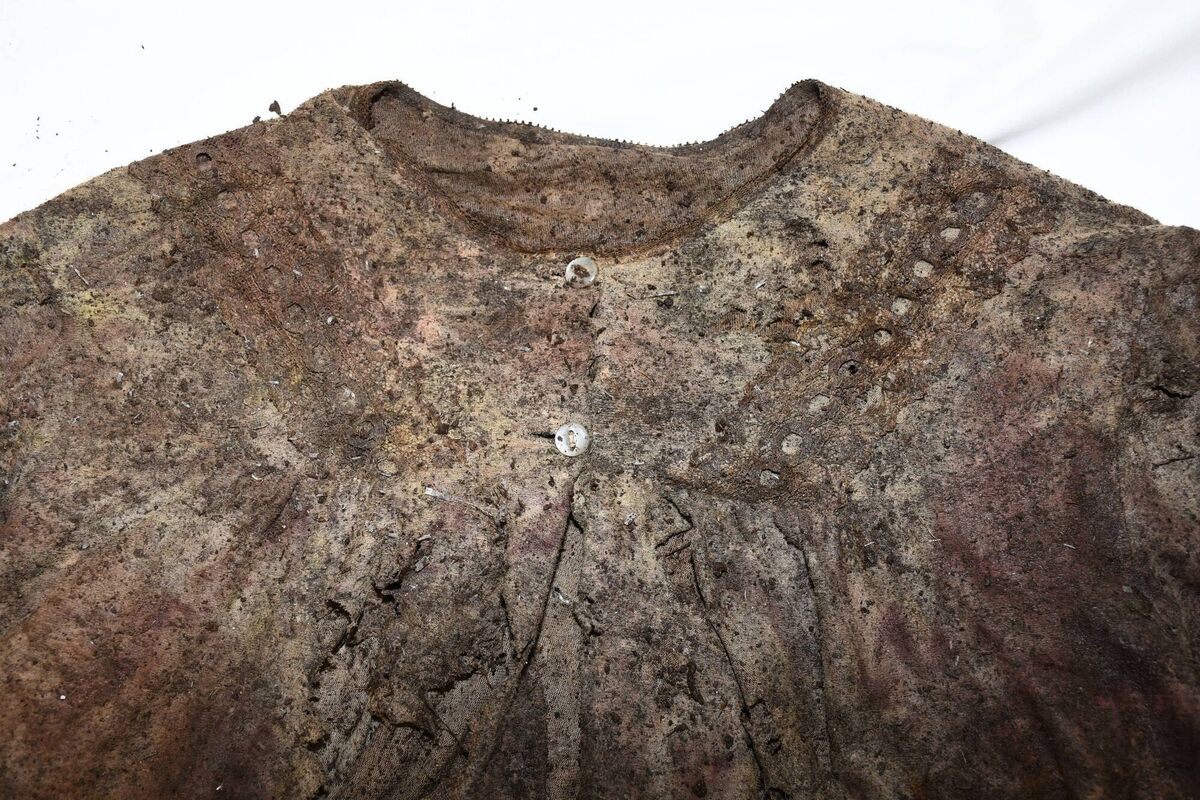
It is believed the woman died of natural causes and it is likely that her deaths was registered at some point as it is believed her remains had previously been buried, before being illegally exhumed and dumped at the location she was found.
A crucifix and other items found close to the remains are believed to have been from a coffin.
According to gardaí, the remains are believed to be those of a female older than 70 years of age at the time of her death.
She is believed to have been between 5ft and 5ft 2in in height, with a large frame.
She is also believed to have suffered from arthritis and she wore dentures.
An item of clothing, 50in in length and thought to be a nightdress, was found nearby.
Although gardaí have previously released images of the clothing to help in identifying the woman, her listing on the human remains database does not include any images.
As gardaí are continuing their efforts identify her, the remains are in storage and there are no plans for burial as yet.
The recent exhumation of the remains of an unidentified man in Bandon has so far yielded no success in identifying him.
DNA samples taken from the remains have been sent to Interpol in a bid to solve a 25-year-old mystery.
The man’s remains were reinterred in St Patrick’s cemetery in the town last month, over three weeks after being exhumed on November 5.
DNA samples were harvested and will now be used in an attempt to identify him.
The man’s remains were found in the River Lee at the Lee Fields in July 1999 and were taken from the water by fire officers.
A gravestone marking the grave of the unknown man reads: “Pray for the soul of a man whose name is known to God alone, interred here on the 25th of October 1999.”
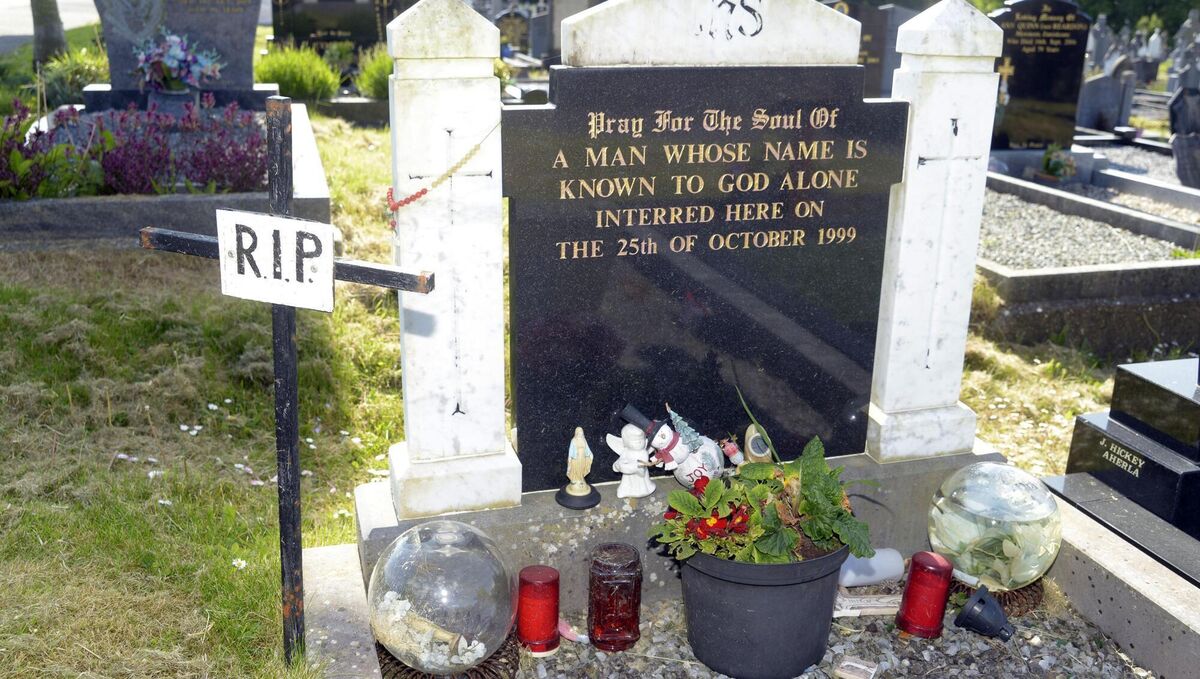
When found, he was wearing a Philip Mercier silver watch with a gold face.
Wooden rosary beads and three religious medals were also found on his person, as well as a Good Luck medal in the shape of a horseshoe, on which was etched the name MacGinty.
However, efforts to identify the man failed.
Fingerprints could not be obtained because of the decomposition of the body.
Earlier this year, gardaí made a formal request to the coroner for South Cork, Frank O’Connell, for an exhumation of the body for the purpose of DNA profiling.
Under coronial legislation, exhumations are allowed if a licence is obtained or if an order is made by the minister for justice.
Mr O’Connell made an application to Justice Minister Helen McEntee for the order in recent months and confirmed a licence has been granted.
An exhumation must be carried out under strict conditions, with an environmental health officer present to ensure public health is protected.
The officer also attends the reburial of the remains.
Typically, the area of a graveyard where the exhumation is to take place is sealed off for privacy.
The case of a man who checked into a hotel in Sligo as Peter Bergmann continues to fascinate people, as his true identity remains unknown.
Despite CCTV footage being available of the man, attempts to identify him since his body was found on the beach at Rosses Point outside Sligo on June 16, 2009, have failed.
He is buried in a cemetery in Sligo.
The man arrived in Sligo on June 12, 2009, on a bus from Derry and he used a false name to check into a hotel later that day.
He checked into the hotel for three nights.
He was sighted and captured on CCTV in and around the Sligo area for a number of days before his death.
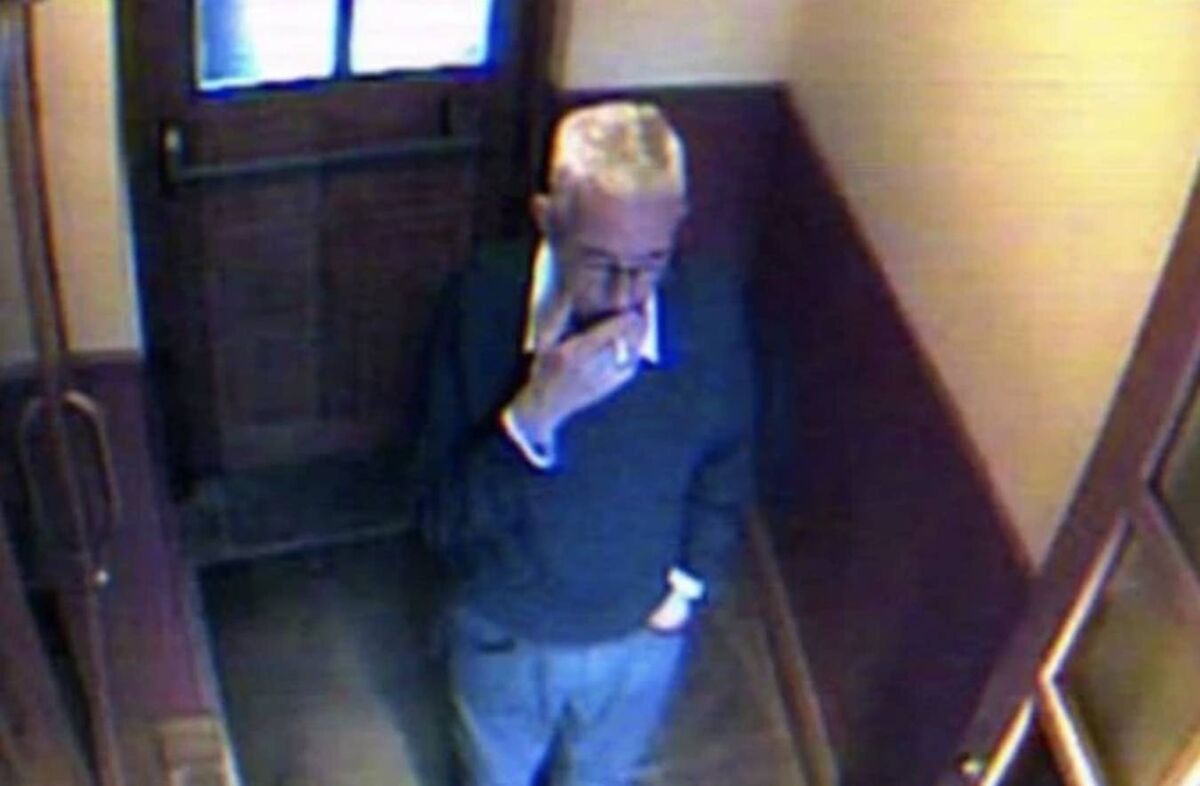
When he was discovered on Rosses Point beach by a local father and son, items of clothing were found on nearby rocks, including black leather Finn Comfort shoes, size 44, manufactured in 2002 in Germany; dark socks; a black leather C&A jacket; navy C&A chino trousers; a black sleeveless Tommy Hilfiger jumper; and a black Key West USA leather belt, made in Italy.
Identification cards were also found at the scene but were blank, according to the human remains database.
While his nationality are unknown, he is understood to have told a local taxi driver he hired that he was Austrian and he also gave an address in Vienna as his address when checking into the hotel.
He had a gold tooth.
When the human remains database was unveiled in May 2023, his case was not featured on it but has since been added to it.
As well as CCTV images of him, the listing also includes a photo of him post-mortem.
An inquest into his death took place in April 2010 and a verdict of death by drowning was returned.
Among the remains listed is the body of a woman believed to be Asian, possibly Vietnamese.
Her remains were taken from the sea off Doolin, Co Clare, on October 4, 2018 and she was laid to rest in Drumcliffe graveyard in east Clare.
When the database was initially published, the entry relating to the woman outlined that the body had “open wounds and open fractures deemed not post mortem”.
This is no longer contained on the listing, however.
The current listing says that a ring described as a band of metal circles was worn on the left hand’s ring finger, with Lara inscribed on the inside.
There is no photograph of the jewellery.
However, the discovered that more in-depth details about the woman’s remains are on the British database of unidentified remains, including photos of the jewellery that the woman had been wearing — the ring, as well as a bracelet.
An autopsy was carried out on October 6, 2018, while DNA samples have also been taken.
A forensic orthodontist was also contacted to perform a full dental examination.
However, efforts so far to identify the woman have proven futile.
The British listing also states that the woman of slim build, measured 5ft 9in, had grey hair and a gold tooth, and was between 50 and 55 years old.
It also gives the exact location of where her body was found as being half a mile out to sea from the Sea Stacks close to the Cliffs of Moher.
That in-depth information is only available if someone goes to check the British database on the National Crime Agency’s website.
The remains of a man believed to be one of the victims of the 1968 Tuskar Rock air tragedy off the coast of Wexford are still unidentified almost 60 years after they were found.
The remains were found in the sea near Tuskar Rock in May 1968 — two months after Aer Lingus flight 712 crashed into the sea off Wexford on March 24, 1968.
The Aer Lingus Viscount was on a flight between Cork and London Heathrow when it crashed.
All 57 passengers and four crew members died.
Thirteen bodies were found shortly after the accident and were identified and buried.
Another was discovered on May 11 but efforts to identify the decomposed body through DNA profiling have failed.
The man’s body has been buried in Crosstown cemetery in Wexford.
The report noted in relation to the Tuskar Rock discovery: “The post-mortem carried out concluded that the injuries were consistent with someone involved in a plane crash.”
The remains were exhumed in 2000 for DNA extraction.
Families of some of those killed in the crash provided DNA in the hope that the unidentified remains could be reunited with his family.
However, the identity remains unknown.
A report published in 2002 found that the crash may have been a result of structural failure of the aircraft, corrosion, metal fatigue, ‘flutter’ or a bird strike.
The possibility of the involvement of any other aircraft or missile was ruled out.




